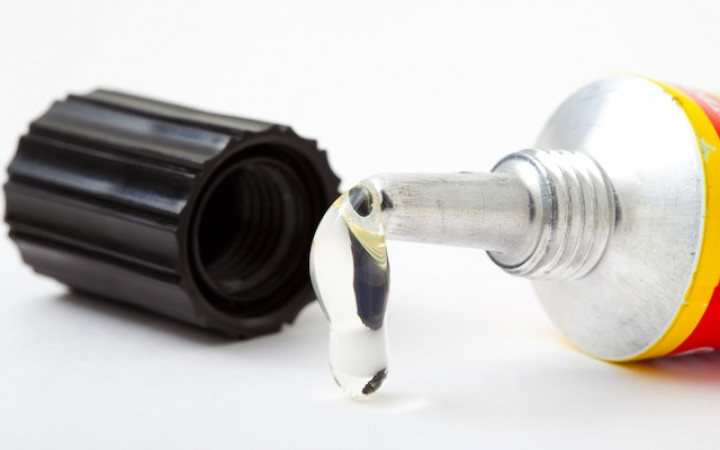Ever wonder what makes super glue so super? The little tube of super glue in your cupboard is really a type of adhesive with a big name: cyanoacrylate.
Epoxies and acrylic resins are types of adhesives. When these adhesives are mixed, a chemical reaction occurs, causing them to harden.
Cyanoacrylate is an acrylic resin that forms its strongest bond almost instantly. The only thing it requires to set is water. Since almost every object has at least tiny amounts of water on its surface, super glue does a super job of sticking most things together very quickly.
Even the air contains water in the form of humidity. As soon as cyanoacrylate molecules come into contact with water, they begin forming a sort of plastic mesh.
As the glue hardens, the strands of the mesh can no longer move, strengthening the bond. If the glue cannot absorb enough water vapor from the air, the bonding process cannot begin and the glue will not harden.
The warnings on super glue are no joke. Super glue can't tell the difference between an art project and human fingers, and it sticks them together all the same.
Skin is made up of all sorts of cracks, crevices, grooves, and pores that give the glue a perfect surface to grab onto. In addition, skin is saturated with water, which activates the glue's hardening process.
Incredibly, doctors have found medical uses for special types of glues. You won't find these glues on hardware store shelves, but medical adhesives are sometimes used to close wounds instead of using traditional sutures or staples.




